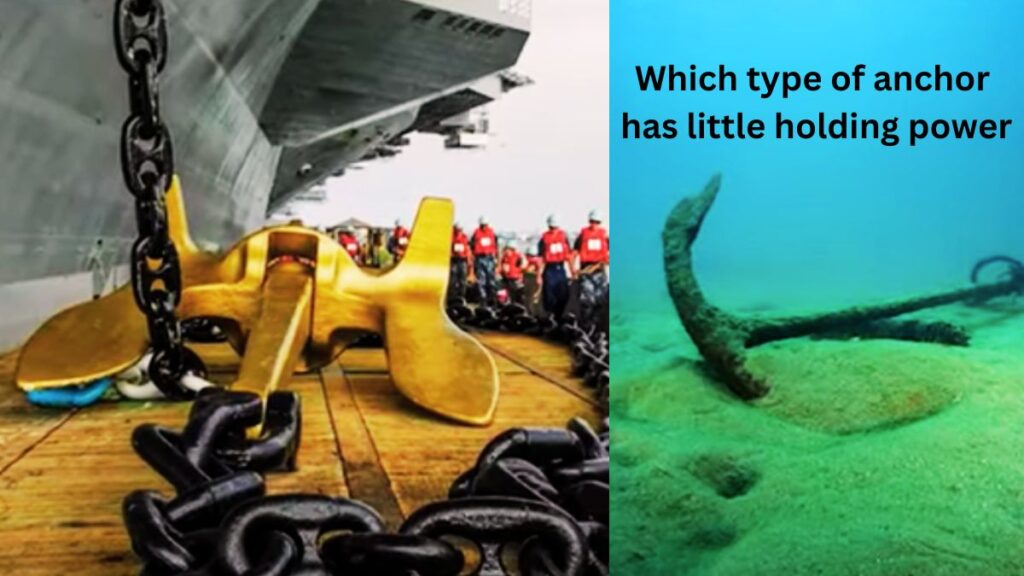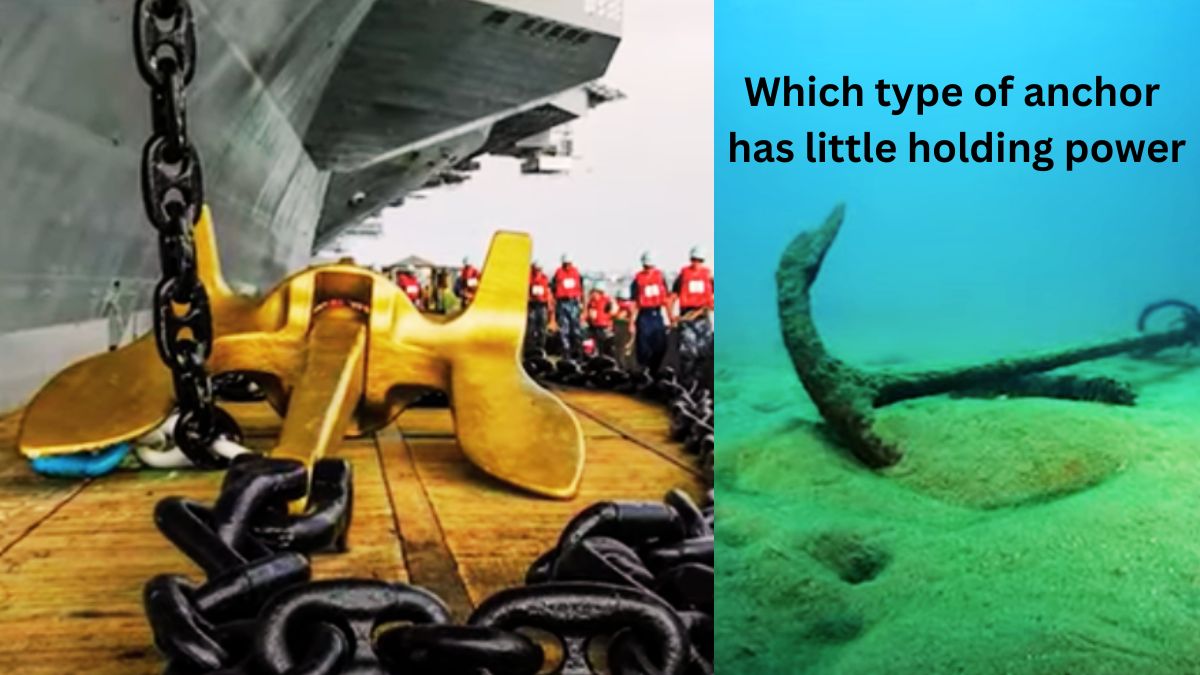Which type of anchor has little holding power? Before going, let’s learn the general idea of a lightweight anchor. Lightweight anchors are specialized devices in various drives designed to secure objects to surfaces with minimal weight and penetration. They will offer a universal solution for temporary or semi-permanent structures.
Understanding the holding power of anchors is crucial for the navigator to ensure the security and stability of the system, equipment, or installation. That will affect the anchoring system’s dependability and performance concerning safety and operating efficiency.
Learn Which type of anchor has little holding power
We will discuss Which type of anchor has little holding power more holding power. Anchors with a small holding ability are typically used for light craft such as kayaks, canoes, and little boats. Standards of anchors with small holding capabilities include mushroom, grappling, and cage anchors.

Mushroom Anchor
Mushroom anchors are the most typical type of anchor utilized on small ships, such as sailboats, canoes, and kayaks. This type of commentator is created for digging in silt. It will be saved when the boat is anchored.
Claw Anchor
A claw anchor is a particular type of anchor made from a single piece of metal. It is designed for card mining and will hold the boat when it arrives.
Dragging Anchor
A dragging anchor is prepared to be dragged to the depths of a lake or sea. It is often used where the moisture is deep, and the bottom is soft.
Fluke Anchors
A fluke anchor is created from a single piece of metal and has two finish options.
General characteristics of lightweight anchors
Material design: Light anchors are often constructed of aluminum or composite materials, allowing endless importance decline without sacrificing energy.
Structure: These anchors have features like open bodies or lattice designs that reduce volume while maintaining structural goodness.
Length and Weight: Lightweight anchors are more straightforward and considered less than traditional anchors. The prefabricated actual panels are light and modular, making them more relaxed to handle and vehicle while delivering adequate anchoring strength when completed.

Factors impact
- The design and texture of the seabed can significantly affect how well an anchor will carry. For example, sandy bases will hold better than dirty or rocky bottoms.
- Wind, wave, and contemporary forces will significantly impact an anchor’s holding ability. Harsh weather can also lower an anchor’s energy.
- Proper anchor-setting processes can significantly affect its saving power, while mean methods will decrease it.
Elements affecting the holding ability of anchors
Anchors used for recreational boating will lean on the size and style of the boat and whether they can fight additional conditions and restrictions. They will also depend on fishing, swimming, or relaxation travel activities.
Anchors used for temporary mooring, such as short-term docking or docking in unknown wetness, must be suitable for holding the vessel securely despite imaginable temperature and water conditions changes.
Anchors for little plates shall be fit and designed to deliver good holding ability close to the boat’s size and importance. Currents, waves, and winds must also be considered to ensure secure anchoring.
Benefits of anchors with little holding ability:
- Anchors with some holding power will be lighter than their more serious partners. That will make them easier to control, particularly useful for shorter boats.
- Their tight size usually qualifies for easy hold.
- They can be nicely suited to golden or muddy bottoms, as they can efficiently dig into the fabric.
- These anchors will usually release more easily from the seabed, which can be advantageous in situations requiring a quick exit.
- These anchors are generally less expensive than those with higher holding capacity. Because they have little capacity, they can quickly become dislodged and create a safety hazard. They are unsuitable in areas with strong winds or currents, as they may be unable to keep the boat in place.
Learn Importance of anchors in a ship 2024
Cons of anchors with little holding ability
- The most prominent downside is the low holding capacity, as the boat can drift in powerful currents or currents.
- These anchors will be challenging for rocky, grassy, or rugged subsoils, as they will need help perfectly set.
- As these anchors have low holding ability, it will be essential to keep a close eye on the boat’s work, especially in varying weather circumstances.
- If you have a bigger boat, these commentators must be corrected due to reduced holding ability.
- If not ideally set up or the weather needs to change unexpectedly, they can be additionally prone to slip or be carried to the base of the sea.
Depending on your specific requirements, a small holding ability anchor may or may not be the most suitable choice.
Last
Factors such as the lowest type, weather situations, and the anchor setting process affect anchors’ holding power. Anchors qualified to withstand typical requirements and loads are needed for recreational boating, transient moorings, and small watercraft.
Selecting a suitable anchor will ensure the protection and safety of the ship, passengers, and freight. Using the correct anchor for the specific job conditions and requirements will reduce the risk of being dragged or slipped, preventing accidents, damage, and loss. Thanks for reading our article titled Which type of anchor has little holding power?
FAQs
What anchor has the least holding power?
Grapnels Anchors
It is very inexpensive but does not have much-holding power. Some models are made of bent rebar, while others are made of galvanized metal and have folding flukes. They are good for recovering items on the bottom or for wreck reef anchoring. They are commonly used on very small boats such as canoes or jon boats.
What type of anchor is the most excellent holding power?
Danforth, or fluke-style anchors, are the top choice for most recreational boats with 30′ or less lengths. Fluke anchors provide sufficient holding power, considering their small size. By design, they fold balanced and are easy to stow in hold rooms.
What is anchor holding power?
Holding power needed is the quantity of pull power the commentator must resist having the boat in the referenced wind rate as defined above in the tug-of-war metaphor.

